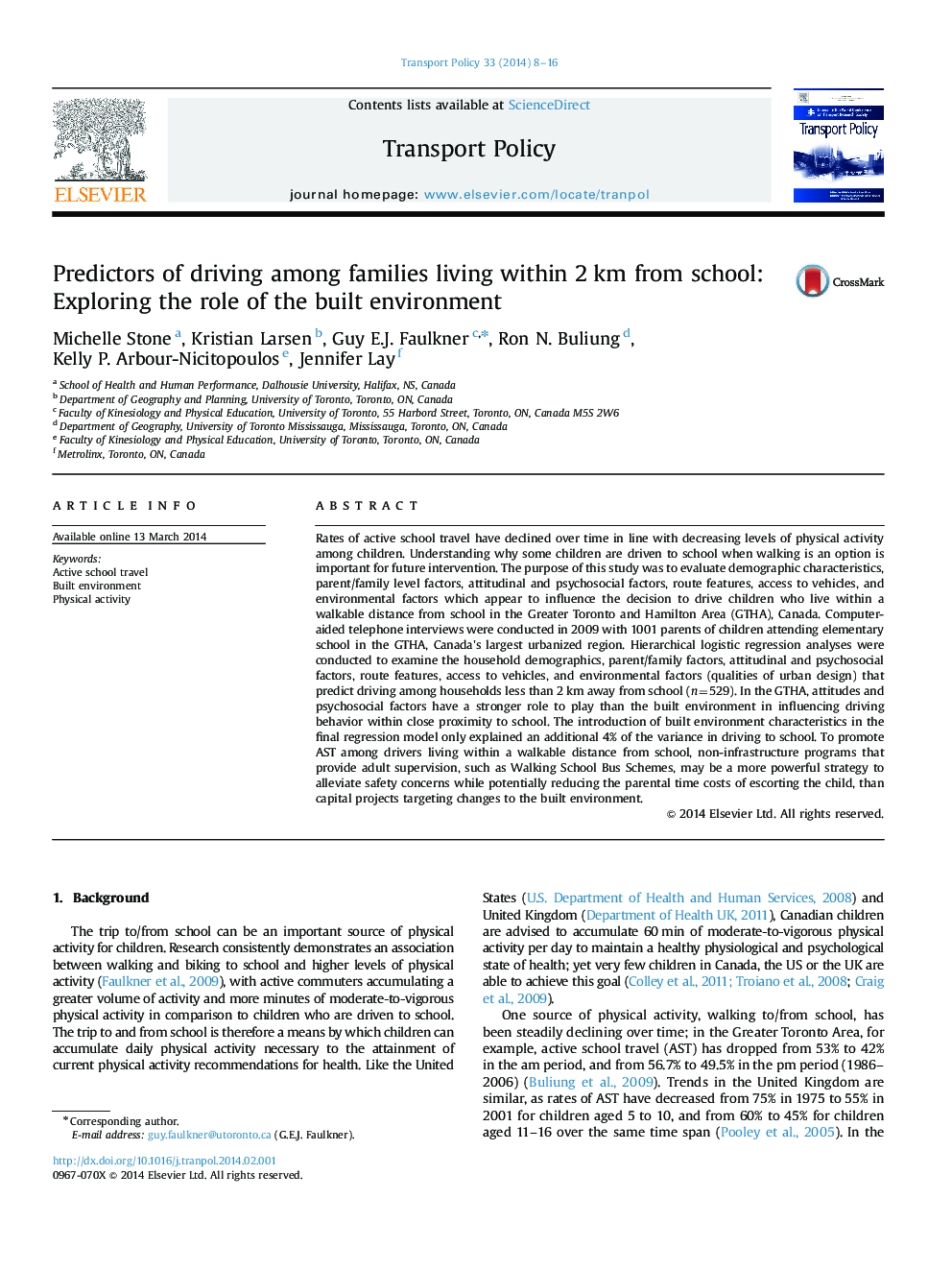| کد مقاله | کد نشریه | سال انتشار | مقاله انگلیسی | نسخه تمام متن |
|---|---|---|---|---|
| 1064830 | 1485844 | 2014 | 9 صفحه PDF | دانلود رایگان |
• It is important to understand why some children are driven to school when walking is an option.
• Attitudes and psychosocial factors may have a stronger role to play than the built environment.
• Non-infrastructure programs that provide safety education and adult supervision are needed.
Rates of active school travel have declined over time in line with decreasing levels of physical activity among children. Understanding why some children are driven to school when walking is an option is important for future intervention. The purpose of this study was to evaluate demographic characteristics, parent/family level factors, attitudinal and psychosocial factors, route features, access to vehicles, and environmental factors which appear to influence the decision to drive children who live within a walkable distance from school in the Greater Toronto and Hamilton Area (GTHA), Canada. Computer-aided telephone interviews were conducted in 2009 with 1001 parents of children attending elementary school in the GTHA, Canada׳s largest urbanized region. Hierarchical logistic regression analyses were conducted to examine the household demographics, parent/family factors, attitudinal and psychosocial factors, route features, access to vehicles, and environmental factors (qualities of urban design) that predict driving among households less than 2 km away from school (n=529). In the GTHA, attitudes and psychosocial factors have a stronger role to play than the built environment in influencing driving behavior within close proximity to school. The introduction of built environment characteristics in the final regression model only explained an additional 4% of the variance in driving to school. To promote AST among drivers living within a walkable distance from school, non-infrastructure programs that provide adult supervision, such as Walking School Bus Schemes, may be a more powerful strategy to alleviate safety concerns while potentially reducing the parental time costs of escorting the child, than capital projects targeting changes to the built environment.
Journal: Transport Policy - Volume 33, May 2014, Pages 8–16
